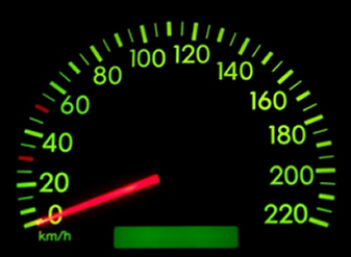Debt tends to get a bad rap – and for good reason: It can be challenging to manage and may even cripple your finances.
But debt can also be a useful financial tool for reaching your goals, as long as you know how to manage it. We take an in-depth look at “bad debt vs. good debt” and how you can use debt to your financial advantage.
Is All Debt Bad?
Despite what some financial gurus claim, not all debt is bad.
There are several components to determine whether debt is good or bad, including:
Principal - how much you borrow in total either with a loan or charged to your account
Interest rate - how much you pay the lender to borrow the money
Loan term - how long you must pay on the loan in order to pay it back
The asset - what you’re buying with the money you borrow
An example of bad debt is credit card debt. It’s high interest debt that can take a long time to pay off. With a credit card, you’re typically only buying depreciating assets (items that lose value over time) rather than appreciating assets (items that retain and grow in value overtime).
For most people, credit card debt doesn’t help them build wealth.
What Is Good Debt?
Good debt is when you borrow money for the purpose of building wealth over the long term.
Good debt allows people to buy houses, invest in their business and make other purchases that provide some kind of return.
A few key components of ‘good debt’ include:
Low interest rates
Appreciating assets (assets that increase in value overtime)
Debt that can be forgiven
Debt that can provide a return on investment in some way
While not all of these items overlap all of the time, it’s good for you to keep them in mind if you want to manage and use your debt to help grow your wealth.
2 Great Ways to Use Your Debt to Your Financial Advantage
Below are a few ways you can use debt to help you reach your financial goals.
1. Grow Your Credit History with Debt
To prove credit worthiness and build your credit score, you have to borrow money and pay it back. The key is to do so wisely and in a way that you can afford. Managing your debt-to-income ratio is an excellent way to keep track of your debt and make sure you aren’t taking on too much.
Use the Debt-to-Income Formula
To find out what your debt-to-income ratio is (and how much debt you can afford) you can use the following formula:
Monthly Debt Payments/ Gross Monthly Income = Debt-to-Income Ratio
For instance, if you take home $3,000 a month, and each month you pay $1,000 to your debts, your debt to income ratio would be 30%. The general rule of thumb for lenders is 28/36- with no more than 28% of gross monthly income on housing expenses and 36% towards total debts (car loans etc). Going over this will not only severely limit your cash flow, but it may also be a red flag to future lenders. The lower your debt ratio, the better.
2. Reach Milestones with Debt
Most people can’t buy a house with cash and need to take on debt (ie. mortgage) to purchase one. If you bought a home at the right time in a growing neighborhood, it can easily be an appreciating asset that helps to build your wealth.
Student loans are another form of debt that can help you reach a major milestone and build your wealth. While you want to take out as few student loans as possible, the right college degree can provide a return by offering you higher paying career opportunities.
Just remember: No matter the size of the milestone, never take on more debt than you can afford. Always do your own research prior to getting into debt.
How Can I Manage my Good vs. Bad Debt?
One thing is true about both good and bad debt: You don’t want to hang onto it forever. Here are 4 simple ways to manage them.
1. Make On Time Payments
Making on-time payments reflects positively on your credit score. On top of this, paying back your debts in full can help you establish good credit. Good credit generally means you get more favorable terms for future debt (including low interest rates).
2. Pay Off the High-Interest Bad Debt First
Remember high interest debt is bad debt. You want to pay this off first before you focus on paying off the ‘good debt’. For example, you should work to pay off your credit card debt with a 21% interest rate before attempting to pay off your mortgage with a 4.5% interest rate.
3. Balance Paying off your Good Debt with Investing
Once you’ve managed to pay off your bad debt, try paying off your good debt while making wise investments. Investing allows you to prepare for retirement and build generational wealth.
4. Keep your Debt Manageable
Keep track of your debt-to-income ratio and your payment schedules. Make a budget so you can build out a debt pay off plan attacking bad debt first. Never take on more debt than you can afford.




